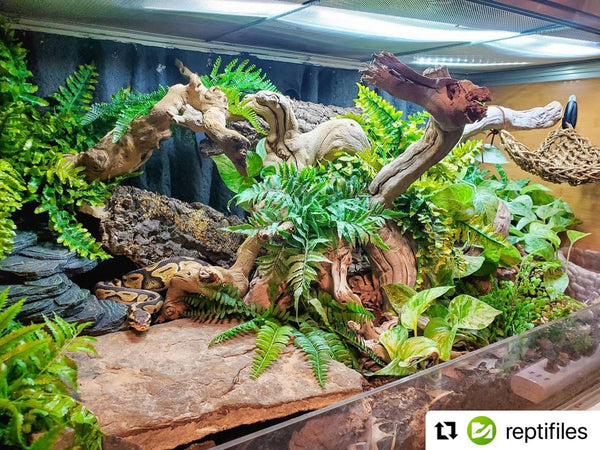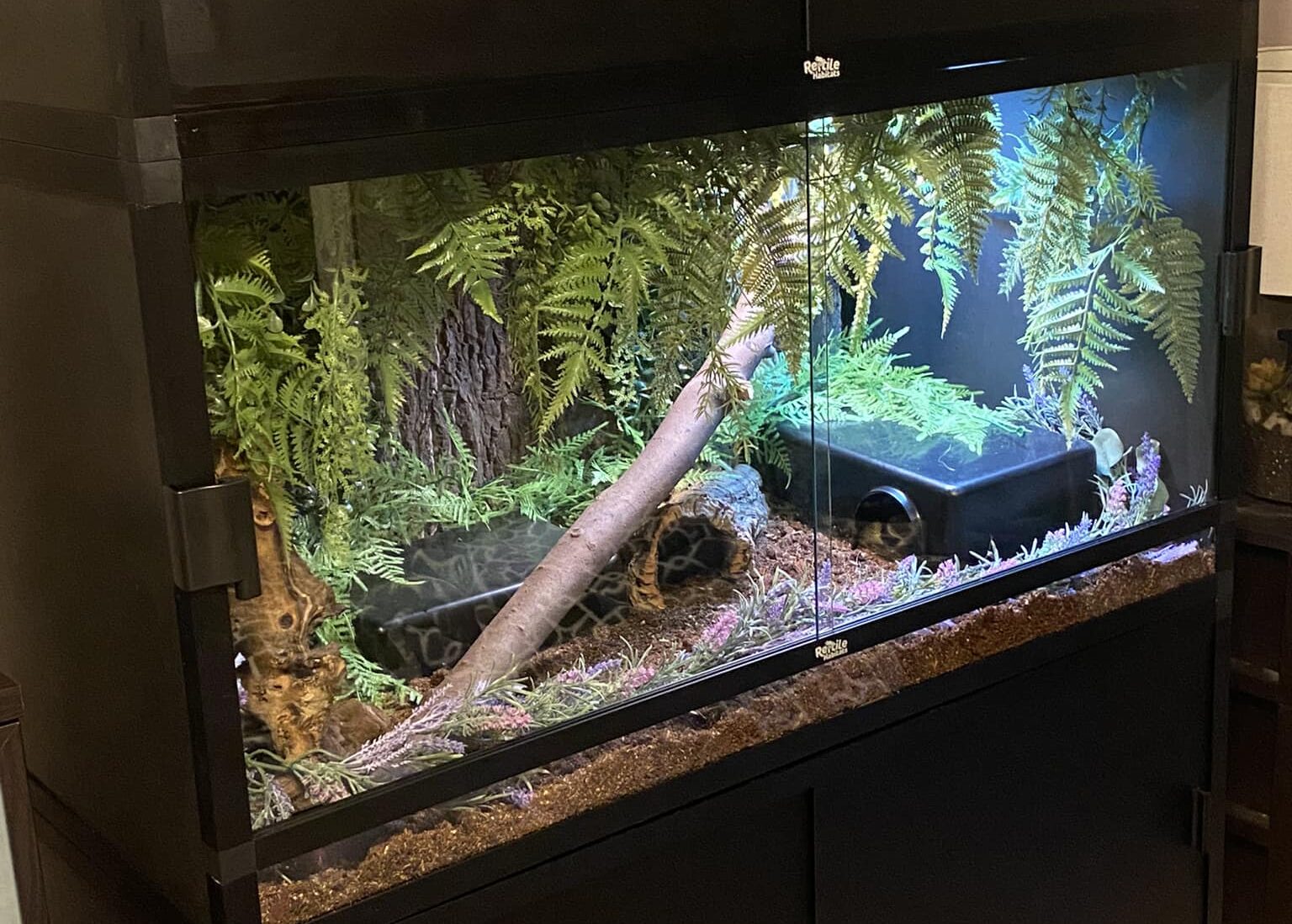Welcome to the world of ball python care! If you’re looking to create the perfect sanctuary for your scaly friend, you’ve landed in the right place. As a proud owner and enthusiast of ball pythons for over a decade, I understand the importance of a well-decorated and functional enclosure. Not only does it enhance the aesthetics of your setup, but it also plays a critical role in the health and happiness of your pet. Let’s dive into the intricacies of ball python enclosure decor!
Understanding Ball Python Behavior
Before we get into the details of decoration, it’s crucial to understand the natural behavior of ball pythons. These snakes are known for their shy nature and tendency to hide when they feel threatened. Therefore, providing an environment that mimics their natural habitat can significantly reduce stress levels.
Natural Habitat of Ball Pythons
Ball pythons (Python regius) are native to the grasslands and forests of West Africa. In the wild, they often hide in burrows or dense vegetation. This means your enclosure should cater to their desire for security and concealment.

Key Behavioral Traits
- Shy and reclusive
- Ground-dwelling and arboreal tendencies
- Need for warm and humid environments
- Seasonal breeding behaviors
Choosing the Right Enclosure for Your Ball Python

Before we explore decor options, let’s outline the basics of selecting the right enclosure. A proper enclosure is your snake’s sanctuary, so it needs to meet specific needs.
Size Matters

The size of the enclosure is crucial. A general guideline is to have at least a 40-gallon terrarium for an adult ball python. However, juvenile snakes can thrive in smaller habitats until they grow.
Enclosure Size Chart

| Age Stage | Recommended Size |
|---|---|
| Hatchling (< 1 year) | 10-20 gallons |
| Juvenile (1-3 years) | 20-40 gallons |
| Adult (3+ years) | 40-75 gallons |
Material Selection

Glass, plastic, and wood are common materials for snake enclosures. Glass provides visibility and insulation, while plastic is lightweight and easier to clean. Wooden enclosures, while aesthetically pleasing, can be harder to maintain, especially regarding humidity control.
Essential Decor Items for Ball Python Enclosures

The decor you choose plays a pivotal role in your python’s comfort and health. Here are some essential items to consider:
Hiding Spots

Providing hiding places is essential for a ball python’s peace of mind. Here are some popular options:
- Commercial Hides: These are specifically designed for reptiles and can be made from resin or ceramics.
- DIY Hides: You can create your hides using natural materials like hollow logs or rocks.
Pros and Cons of Hiding Spots
| Type | Pros | Cons |
|---|---|---|
| Commercial Hides | Durable, easy to clean | Can be pricey |
| DIY Hides | Cost-effective, customizable | May harbor bacteria if not cleaned |
Substrate
The substrate is the material that lines the bottom of the enclosure. It can affect humidity levels and provide a comfortable surface for your snake. Here are some common substrates:
- Aspen Shavings: Excellent for moisture control and easy to spot-clean.
- Coconut Fiber: Great for humidity but needs to be changed regularly.
- Paper Towels: Easy to clean and safe for hatchlings.
Substrate Comparison
| Substrate Type | Pros | Cons |
|---|---|---|
| Aspen Shavings | Good bedding, easy to clean | Not very good for humidity |
| Coconut Fiber | Retains moisture well | Can harbor mold if not maintained |
| Paper Towels | Cheap and hygienic | Not as natural-looking |
Climbing Structures
Even if ball pythons are primarily ground-dwelling snakes, they enjoy having access to climbing structures. Driftwood, branches, or commercially available reptile branches can provide enrichment and exercise.
Benefits of Climbing Structures
- Encourages natural behavior
- Provides exercise opportunities
- Enhances enclosure aesthetics
Temperature and Humidity Considerations
Proper heating and humidity are paramount for your python’s well-being. Utilize heating pads or lamps to maintain the right temperatures. A hygrometer is also a great tool to keep track of humidity levels.
Humidity Levels and Their Importance
- Ideal humidity levels are between 50-60%.
- Higher humidity during shedding can assist in the process.
Decorative Items to Enhance Aesthetics
In addition to function, let’s consider some decorative elements that will create an appealing habitat for both you and your snake.
Natural Elements
Incorporating natural elements like rocks, plants, and logs can create an inviting environment. Here are a few options:
- Silk Plants: Safe and long-lasting, they provide cover without the need for upkeep.
- Live Plants: Adding real plants can help maintain humidity but requires extra care.
Personal Experience: My Favorite Decorative Item
One of the best additions to my enclosure has been a large silk plant. It not only looks beautiful but provides a perfect hiding spot for my ball python, making her feel secure and comfortable.
Rocks and Natural Decor
Using flat rocks can not only enhance the aesthetics but also provide basking spots. Ensure to smooth out any sharp edges to protect your snake.
Rock Setup Tips
- Use flat, non-toxic rocks.
- Arrange in a way that allows your snake to climb.
Maintenance and Cleaning Tips for Your Enclosure Decor
Keeping your ball python’s enclosure clean is crucial for their health. Here are some maintenance tips:
Regular Cleaning Schedule
- Spot clean daily: Remove waste and uneaten food.
- Full clean every 2 weeks: Replace substrate and clean decor with reptile-safe cleaners.
- Deep clean monthly: Disinfect the enclosure thoroughly.
Choosing Reptile-Safe Products
When selecting cleaning products, ensure they are safe for reptiles. Avoid bleach or ammonia-based products, as they can harm your python.
Common FAQs on Ball Python Enclosure Decor
1. What should I avoid when decorating my ball python’s enclosure?
Avoid sharp or abrasive materials that could hurt your snake, and steer clear of chemical products that can be toxic.
2. How many hides should I have in the enclosure?
It’s recommended to have at least two hides: one on the warm side and one on the cool side. This gives your python choices for comfort.
3. Can I use live plants in my ball python’s enclosure?
Yes, live plants can be used, but make sure they are non-toxic and can survive in the humidity and lighting conditions of the enclosure.
4. How often should I change the substrate?
Substrate should be changed completely every 2-4 weeks, or sooner if it becomes soiled.
5. How much humidity do ball pythons need?
Ball pythons thrive in a humidity range of 50-60%. Use a hygrometer to monitor levels closely.
The Final Touch: Personalizing Your Ball Python’s Habitat
Creating a beautiful and functional home for your ball python is not just about aesthetics; it’s also about ensuring their health and happiness. Take the time to experiment with different decor items, structures, and plants. Over the years, I’ve learned that each snake has its own preferences, so don’t hesitate to adjust based on your python’s behavior.
In conclusion, a well-decorated enclosure isn’t just a luxury; it’s a necessity for the well-being of your ball python. By focusing on their needs and behaviors, you can create a sanctuary that they will thrive in. Happy decorating!